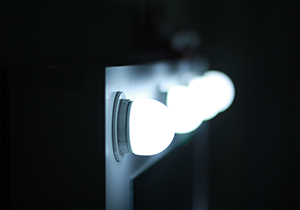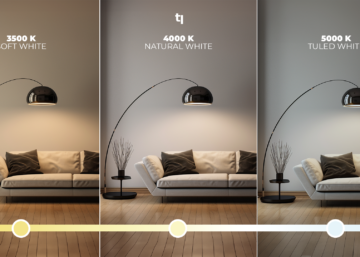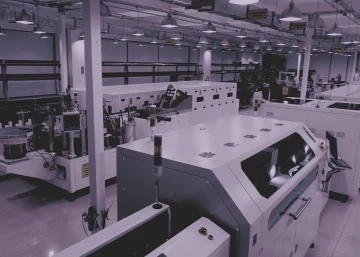Did you know that traditional incandescent bulbs waste 90% of their energy as heat, not light? This increases your electricity bills and contributes to harmful greenhouse gas emissions. In this article, we’ll highlight the differences between LED vs. Incandescent bulbs, helping you make a smarter, more sustainable choice for your home or business.
How do LED vs. Incandescent Bulbs work?
Incandescent bulbs are the traditional lighting solution where electric current produces light by heating a tungsten filament. On the other hand, LED (light emitting diode) bulbs are a new generation of lighting technology consisting of semiconductor materials that can emit light when an electric current is applied.
So, which one is more efficient in terms of energy efficiency?
In terms of energy efficiency, LED bulbs are much more advantageous than incandescent bulbs. Led bulbs can convert 80-90 percent of the energy into light, while incandescent bulbs convert only 10-20 percent into light and lose the remaining energy as heat. Therefore, an LED bulb with the same lumen value consumes much less energy than an incandescent bulb.
I want to buy a Long Life Bulb, but which one?
LED bulbs last much longer than incandescent bulbs. A typical LED bulb can run from 15,000 to 50,000 hours, while incandescent bulbs only run from 1,000 to 2,000 hours. This allows LED bulbs to offer lower maintenance and replacement costs in the long run.
If you want to buy an environmentally friendly light bulb;
In terms of environmental impact, LED bulbs are a more sustainable option than incandescent bulbs. Thanks to less energy consumption and longer life, LED bulbs require less energy production and waste. Also, while tungsten and other chemicals used in incandescent bulbs can harm the environment, LED bulbs contain less harmful materials.
Light Quality and Color Temperature?
LED bulbs offer a wide range of color temperatures, providing suitable lighting for different environments. Incandescent bulbs, on the other hand, generally produce warm white light and offer a more limited choice of color temperatures. LED bulbs can optionally provide a more natural and pleasant light and also offer better color accuracy, showing the true colors of objects.
Heat Production
Led bulbs are a safer lighting solution thanks to their low heat generation. Incandescent bulbs, on the other hand, can be quite hot as they lose a large amount of energy as heat and may carry the risk of burning. Low heat generation allows LED bulbs to be preferred, especially in environments with sensitive materials and plants.
Confused about the price?
LED bulbs are more expensive than incandescent bulbs but are more cost-effective in the long run due to their longer life and energy efficiency. The initial investment in LED bulbs is recouped over time through savings in energy and maintenance costs.
A comparison between LED and incandescent bulbs reveals significant differences in energy efficiency, lifetime, environmental impact, light quality, heat generation, and price. LED bulbs offer a more efficient, long-lasting, and environmentally friendly lighting solution than incandescent bulbs. LED bulbs, which are also more flexible in light quality and color temperature, provide suitable options for different environments. Therefore, users can make a more informed choice by considering the advantages and disadvantages of LED bulbs when evaluating their lighting needs.








